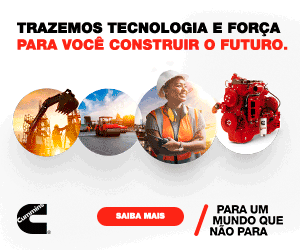State of the art in construction
To increase productivity in worksites, experts suggest process integration, innovative systems, high-tech equipment and training
After fifteen years of this new century, Brazilian construction seems to have entered in a deadlock. After being highlighted with impressive works that are part of engineering history such as Itaipu, Rio-Niterói Bridge and Brasília, among others, the industry is currently being frequently criticized, for example due to project mistakes, low productivity and no vision of process. These factors are constantly pointed as reasons for design and budget that (among other reasons that are not so relevant) make difficult a more consistent retaking of country development.
Bottlenecks such as material waste, out of phase law and low automation level are also pointed, highlighting the urgent necessity of a paradigm break. At this moment companies are trying to increase their efficiency as a way to overpass the difficulties and leverage their cash flow. This gives more relevance to these subjects in the analyses of industry professionals.
“We have no process engineers, only technicians”, emphasizes Jevandro Barros, director of IOpEx Brasil (Institute for Operational Excellence), pointing as mandatory the development of tools and models of operational excellence for the industry, including integrated production systems. “In fact we had a loss of productivity during the last years”, agrees Hugo Marques da Rosa, president of Método Engenharia, seeing in the construction the best pusher for economy growth in the country. “There are too many diversions between design and development of a work, in addition to basic mistakes in topography and geometry, for example.”
PRODUCTION
This seems to be a serious backward motion for a so important industry. But the good news is the availability of ways (and practical suggestions) to overcome this disorder. For Barros, for example, the new model to be adopted has to be focused on production, encouraging a growing industrialization of construction that could promote processes of planning, indicators of evolution and—above all— ability of foreseeing. “We have to involve all stakeholders as soon as possible on the job, developing measures of management and control that may ensure higher efficiency to the projects”, comments the expert. “This includes the mobilization from corporative board to foremen in what we call pulled planning.”
“A feasible trend, such procedure is already carried out in the United States, where a more multifunctional and flexible, easier-to-adjust model is more common. When tools become formal, we can use them in all works, making available a scientific calculation of the production pace and resource leveling”, says Barros.
As frequently occurs, the inspiration of this model comes from industrial plants, which are—since the nineteenth century—the main source of technologic revolutions in the Western world. In this case, Anglo-Saxon concepts such as “just in time” and “just in sequence” (strategies of stability and ability of foreseeing) allied to Japanese concepts of lean management such as “obeya”—literally “war room”, meaning something like involvement—may help together to reduce the restrictions and interferences, allowing the creation of a more productive flow in the area. “In fact, it is basically think before and do the right thing since the mobilization”, says the director, strengthening the importance of anticipated decisions, from the design to the end of each work.
According to Barros, a practical example of this concept occurred in the construction of Manaus Arena (AM). One of the actions carried out was just the redesign of the layout of process-oriented administration areas, bringing closer the professionals in accordance with their functions and interfaces. “This allowed a significant increase in productivity”, says the engineer.

Av. Francisco Matarazzo, 404 Cj. 701/703 Água Branca - CEP 05001-000 São Paulo/SP
Telefone (11) 3662-4159
© Sobratema. A reprodução do conteúdo total ou parcial é autorizada, desde que citada a fonte. Política de privacidade














